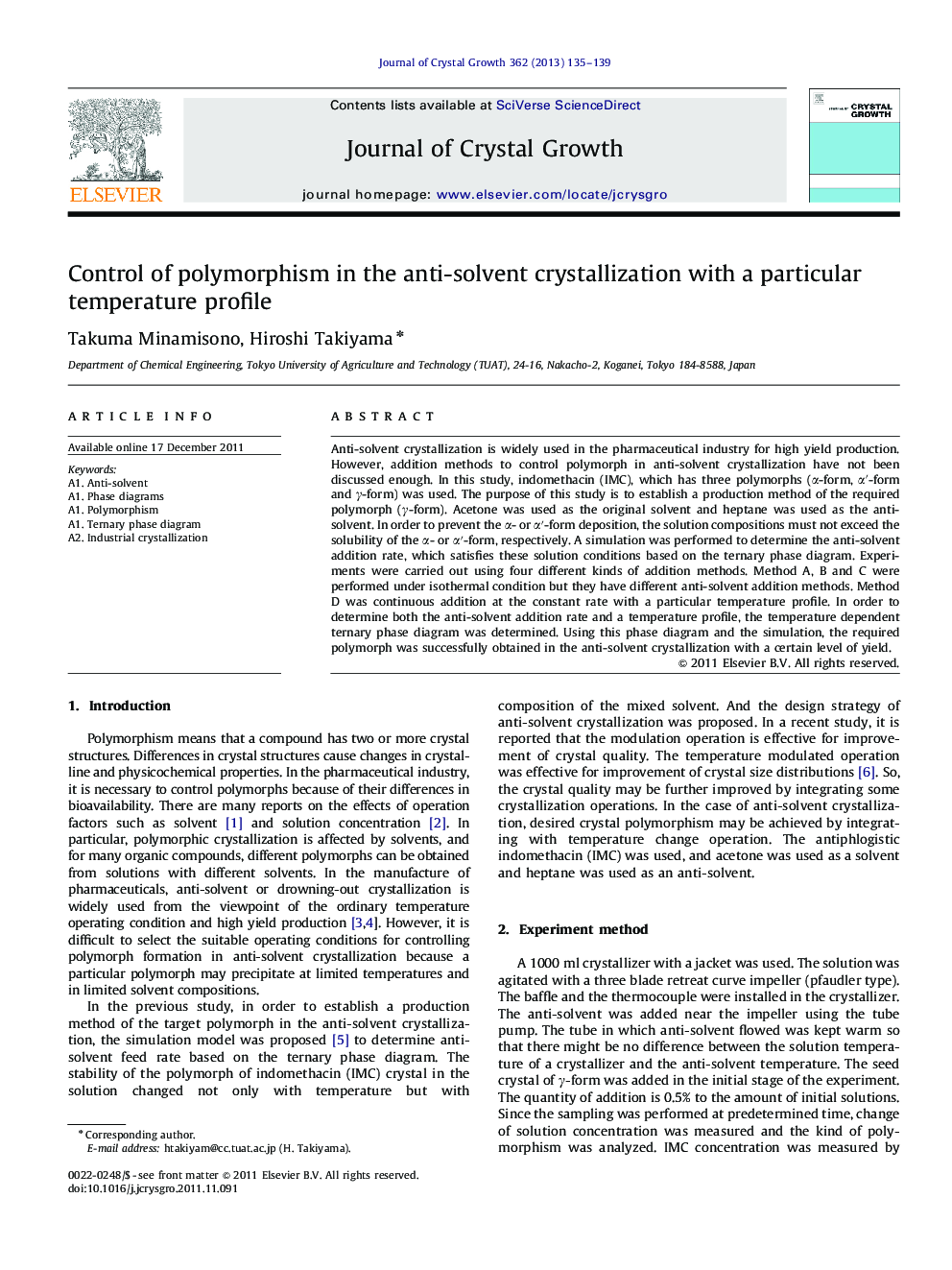| Article ID | Journal | Published Year | Pages | File Type |
|---|---|---|---|---|
| 1791294 | Journal of Crystal Growth | 2013 | 5 Pages |
Anti-solvent crystallization is widely used in the pharmaceutical industry for high yield production. However, addition methods to control polymorph in anti-solvent crystallization have not been discussed enough. In this study, indomethacin (IMC), which has three polymorphs (α-form, α′-form and γ-form) was used. The purpose of this study is to establish a production method of the required polymorph (γ-form). Acetone was used as the original solvent and heptane was used as the anti-solvent. In order to prevent the α- or α′-form deposition, the solution compositions must not exceed the solubility of the α- or α′-form, respectively. A simulation was performed to determine the anti-solvent addition rate, which satisfies these solution conditions based on the ternary phase diagram. Experiments were carried out using four different kinds of addition methods. Method A, B and C were performed under isothermal condition but they have different anti-solvent addition methods. Method D was continuous addition at the constant rate with a particular temperature profile. In order to determine both the anti-solvent addition rate and a temperature profile, the temperature dependent ternary phase diagram was determined. Using this phase diagram and the simulation, the required polymorph was successfully obtained in the anti-solvent crystallization with a certain level of yield.
► Indomethacin-acetone-heptane anti-solvent crystallization was carried out. ► It became possible to increase an anti-solvent rate by integrating heating operation. ► γ-form was obtained in shorter time using the ternary phase diagram.
